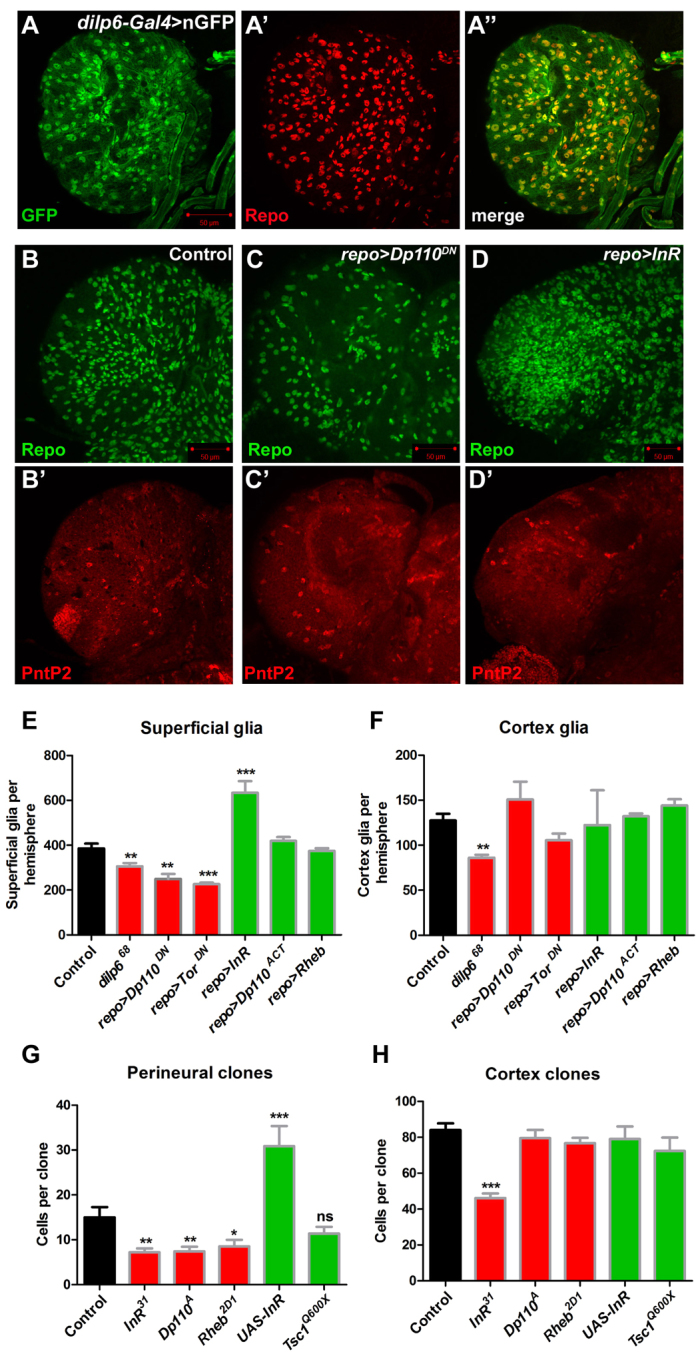Fig. 2.

InR/TOR signalling is required for perineural gliogenesis. (A-A″) dilp6-Gal4 driving nuclear GFP (green) colocalises with Repo expression (red) in glia in the Drosophila larval brain. (B-D′) The ventral superficial layer of larval brain stained for Repo (green) or PntP2 (red) from control (B,B′), or repo-Gal4 driving expression of (C,C′) a dominant-negative form of Dp110 (repo>Dp110DN) or (D,D′) InR (repo>InR). (E,F) Quantification of superficial (E) or cortex (F) glia from homozygous dilp6 mutant larvae (dilp668) or brains expressing inhibitors (red bars) or activators (green bars) of the InR/TOR pathway in glia using repo-Gal4; control is repo-Gal4/+ (G) Quantification of perineural repo-MARCM clone size for FRT82B controls (n=71), InR31 (n=40), Dp110A (n=38), Rheb2D1 (n=53), UAS-InR (n=52) or Tsc1Q600X (n=46). (H) Quantification of cortex repo-MARCM clone size for FRT82B controls (n=15), InR31 (n=19), Dp110A (n=16), Rheb2D1 (n=10), UAS-InR (n=13) or Tsc1Q600X (n=7). Error bars indicate s.e.m. *P<0.05; **P<0.01; ***P<0.001; ns, not significant.
